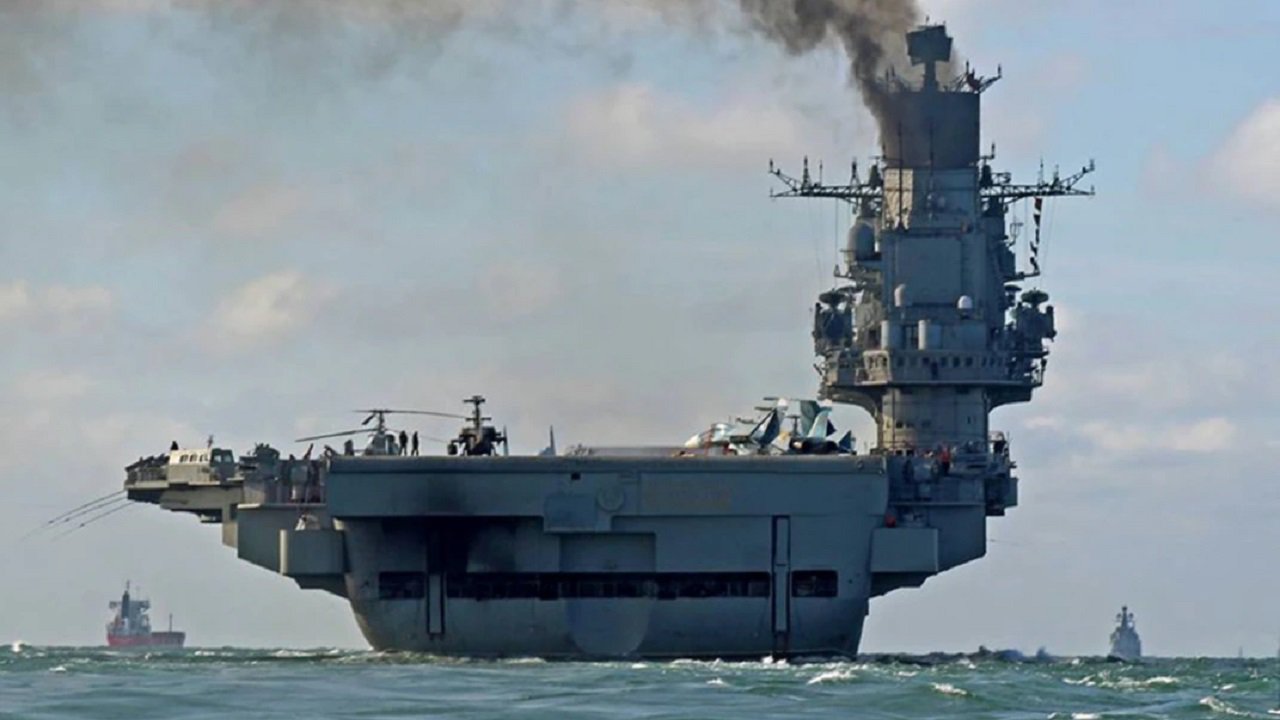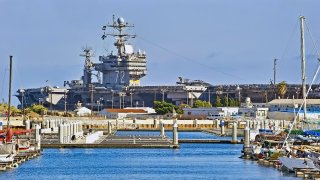What the Russian Navy Wants Most: Nuclear-Powered Aircraft Carriers
Due to historical, financial, and technical challenges, Russia lacks nuclear-powered aircraft carriers. Despite early Soviet projects aiming to develop such carriers, only conventional designs like the Kuznetsov were realized. The Ulyanovsk, a planned nuclear carrier, was halted at 40% completion due to the Soviet Union's dissolution.
Summary: Due to historical, financial, and technical challenges, Russia lacks nuclear-powered aircraft carriers. Despite early Soviet projects aiming to develop such carriers, only conventional designs like the Kuznetsov were realized. The Ulyanovsk, a planned nuclear carrier, was halted at 40% completion due to the Soviet Union's dissolution. Modern Russia faces obstacles in building nuclear carriers, including the massive investment required and the technological know-how. The Admiral Kuznetsov, Russia's only carrier, has suffered from operational issues. Recent interest in reviving nuclear carrier projects has been reported, but political and economic priorities, especially the situation in Ukraine, have likely delayed such developments.
Why No Nuclear Aircraft Carriers for Russia? History Explains
The Nimitz and now Ford-class nuclear-powered supercarriers fielded by the U.S. Navy are undoubtedly some of the most powerful warships to ever take to the seas. With their full complement of embarked aircraft, they represent a massive asset with the ability to launch large strikes almost anywhere in the world on relatively short notice.
Aircraft carriers are not a new technology, the USS Langley was commissioned in 1922. Even nuclear-powered carriers have been around for some time, with the USS Enterprise being commissioned in 1961.
So why didn’t the Soviet Union and later Russia, two of the major powers of the 20th and 21st centuries, ever deploy their own nuclear-powered carrier?
While the Admrial Kuznetsov is certainly a capable craft, when it’s not plagued by numerous problems, it still lacks the major benefits of a nuclear-powered carrier.
The excess power generated by nuclear plants can be used to operate steam catapults to launch aircraft, allowing aircraft carrying heavier combat loads to operate off the carrier. Additionally, this power translates to driving a larger craft through the water faster.
Finally, there is the obvious range and operational benefits of not having to refuel. All these advantages make nuclear-powered carriers a great asset for carrying out blue-water aviation operations and projecting power.
Early Designs Projects 1160 and 1153 Orel:
In the 1960s and 1970s, the USSR began several concurrent design projects to construct a carrier that would become the basis of their blue water fleet. Project 1160 tested many different designs, while Project 1153 was a single design for a nuclear-powered carrier.
Ultimately, none of these carrier designs made it off the drawing board, and instead, Project 1143, the Kiev-class of cruise/carriers, was constructed.
Ulyanovsk Aircraft Carrier :
The closest the USSR got to fielding an aircraft carrier was Project 1143.7 Ulyanovsk. In the 1980s, as the Soviet Navy sought to upgrade the aging Kiev-class, they developed the Kuznetsov and Varyag. While these ships were better than their predecessors, they still could not challenge American aircraft carriers.
To that end, the Ulyanovsk was designed in 1986. She would be a 75,000-ton vessel with two steam catapults, a ski jump, and arresting gear, capable of launching and landing much heavier aircraft than her contemporaries.
In order to construct this massive vessel, Soviet engineers carried out a massive refit of the Black Sea Shipyard. This was arguably the only successful part of the program as these modernizations were completed. When it came time to begin building the Ulyanovsk, work began in 1988. By 1992, work was stopped as funding dried up and the Soviet Union dissolved. The Ulyanovsk was only 40% complete.
Russian Carriers?
Failing to inherit a nuclear-powered carrier from the USSR doubtlessly limited Russia’s ability to acquire one. The time, cost, and know-how required to build one from scratch represent a massive investment that Russian industry likely couldn’t sustain for the first few decades after the inception of the Russian Republic.
Instead, Moscow is forced to rely on its singular aircraft carrier Admiral Kuznetsov. This hefty ship on paper should be quite formidable, however, its plagued history of mishaps and poor performance renders the carrier as more of a burden.
The carrier’s shoddy construction has limited the capabilities of her boilers. Since the ship is fueled by the dark and tarry Mazut substance, proper piping and boiler installations are essential to ensure it can be efficiently preheated and pressurized. However, due to insufficient piping incorporated on the carrier during her construction phase, the boilers are unable to function at full capacity.
Over the last decade, an array of incidents have forced Kuznetsov to spend the majority of its time on drydock. Back in 2018, a floating crane fell onto the carrier deck followed by a fire ignited by a welding mishap one year later. During the ship’s first deployment in Syria a few years prior, two fighters were lost when faulty arresting wires failed to secure their landings onto the deck. The Kuznetsov has essentially been relegated to dock duty, considering the frequencies of its overhauls.

Although Russia’s sole carrier is not faring well today, the past five years have shown a renaissance of Russian nuclear carrier development. The state-run news agency Tass reported in 2019 that work was set to begin developing a nuclear-powered carrier.
The initial unveiling was expected to take place in 2023; events in Ukraine have likely derailed this proposed plan. For the time being, Russia seems to be far more focused on supplying the conflict there than developing new technologies.

It seems unlikely that a nuclear-powered Russian carrier will take to the seas any time soon.'
About the Author: Maya Carlin
Maya Carlin, National Security Writer with The National Interest, is an analyst with the Center for Security Policy and a former Anna Sobol Levy Fellow at IDC Herzliya in Israel. She has by-lines in many publications, including The National Interest, Jerusalem Post, and Times of Israel. You can follow her on Twitter: @MayaCarlin.

